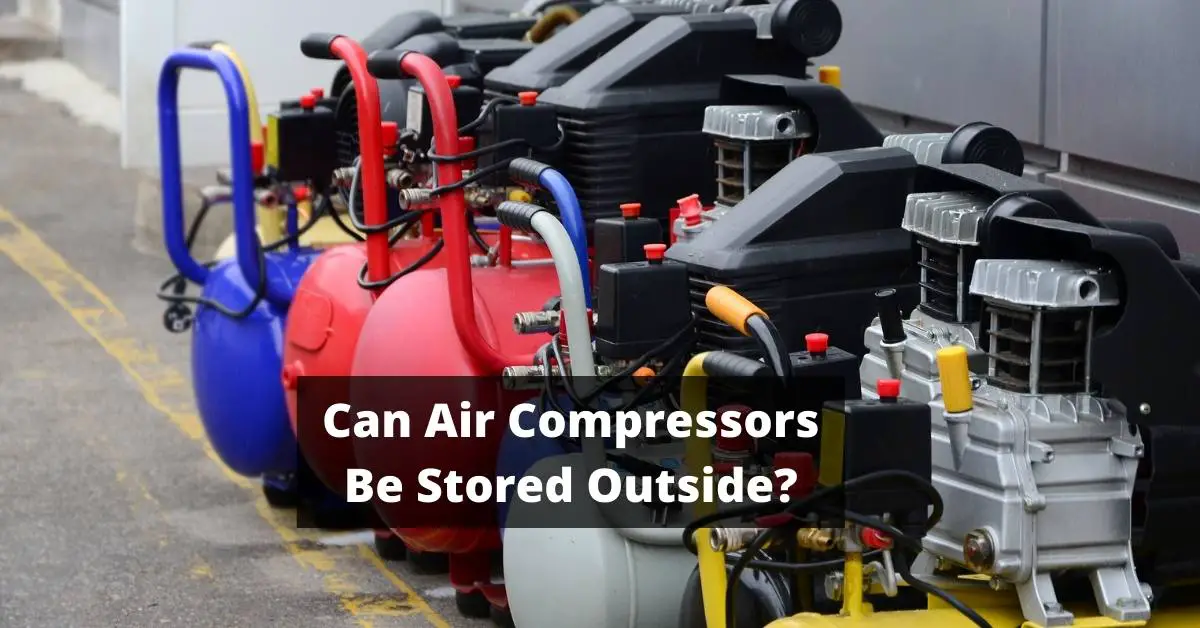As I stood in front of my air compressor, feeling lost and unsure of how to set the pressure, I couldn’t help but feel like a fish out of water. The myriad of buttons and gauges looked like an alien language, and I had no idea where to start.
But with some research and some trial and error, I soon became an expert on setting the perfect pressure for my compressor.
Setting the pressure on an air compressor can seem daunting at first, but it’s an essential skill for any DIY enthusiast or professional mechanic. With the right tools and knowledge, you can easily adjust the pressure to suit your specific needs.
In this article, we’ll walk you through the steps to set your compressor’s pressure correctly so that you can get back to tackling your projects with confidence. So let’s dive in!
Understand the Components of an Air Compressor
Take a moment to learn about the different parts that make up an air compressor so you can get the most out of your machine.
The main components include the motor, tank, regulator, pressure gauge, and safety valve. The motor powers the compressor pump which fills up the tank with compressed air.
The regulator controls and maintains the pressure level in the tank while the pressure gauge displays it for easy monitoring. Lastly, the safety valve releases excess air if there is too much pressure buildup.
Understanding each part of your air compressor will help ensure that you use it safely and efficiently. It’s important to regularly check these components for any damages or malfunctions that may affect its performance.
For instance, a leaky hose or malfunctioning safety valve can lead to accidents while using your machine.
Now that you’re familiar with the different parts of an air compressor, let’s move on to determine the required pressure level for your specific task. This step is crucial as it affects both your tool’s performance and lifespan. Knowing how much pressure is needed will prevent overloading or underperforming of your equipment.
Determine the Required Pressure Level
Imagine your car’s tires, each tire requires a different amount of air to perform at its best. Similarly, before you start using your compressor, it’s important to determine the specific level of power that is needed for your project.
This is because different tools and applications require different pressure levels to work efficiently. The first step is to check the user manual or tool specifications for the recommended pressure level.
Once you have determined the required pressure level, it’s time to set it on your air compressor. Most compressors have a regulator knob that allows you to adjust the pressure output. Before adjusting the regulator knob, make sure that your compressor is turned off and unplugged from any electrical outlet.
Then turn on the compressor and let it fill up until it reaches maximum capacity. Now that your compressor has reached its maximum capacity, you can adjust the regulator knob according to the required pressure level.
Turn the knob clockwise or counterclockwise until you reach your desired setting. It’s important not to exceed this setting as over-inflating can lead to equipment damage or even injury. Once you’ve set the desired pressure level, turn off and unplug your compressor before disconnecting any hoses or attachments.
Turn off the Compressor
Make sure to always turn off your compressor properly to avoid potential safety hazards and equipment damage. This is an important step that shouldn’t be overlooked when setting the pressure on your air compressor.
To turn off the compressor, you need to first release the pressure from the tank by opening the drain valve located at the bottom of the tank. Once all of the pressure has been released, switch off the compressor using its power switch.
Turning off your compressor properly will help prevent any accidents or mishaps that could occur if it’s left running unattended. Additionally, it can also prolong your air compressor’s lifespan by reducing wear and tear on its components caused by unnecessary continuous operation.
Keep in mind that neglecting this simple step can lead to costly repairs and even worse, injuries.
Now that you’ve turned off your air compressor, it’s time to move onto adjusting its regulator. This is where you’ll set the desired pressure level for your specific application.
By following these steps carefully, you’ll be able to optimize your air tools’ performance while ensuring safe operation of your equipment.
Adjust the Regulator
It’s time to tweak the regulator and optimize your air tools’ performance for safe operation. The regulator is a vital component of any air compressor system as it controls the pressure level of compressed air before it reaches your tool.
Before adjusting the regulator, make sure that you’ve turned off the compressor and allowed it to cool down.
To adjust the regulator, first, locate it on your compressor system. It’s usually located near the outlet line of the pump or tank and has a gauge attached to it. Begin by loosening the lock nut that secures the knob on top of the regulator.
Turn this knob clockwise to increase pressure or counterclockwise to decrease pressure, while monitoring the gauge until you reach your desired pressure level.
Once you’ve adjusted your regulator, turn on your compressor and let it run for a few minutes to allow it to build up pressure in its tank. Then connect your tool and check if its performance matches what you expect from them at that specific PSI level. If not, fine-tune again until you achieve optimal performance levels for all of your tools.
With an optimized system, testing for proper airflow will be straightforward; just test each tool one by one while keeping an eye out for any noticeable drops in performance due to low-pressure levels.
Test the Pressure Level
Now that you’ve adjusted the regulator, it’s time to put it to the test and see if your tools are running like a well-oiled machine. Testing the pressure level is an essential step before starting any work with your air compressor.
To do this, attach a pressure gauge to the end of the hose and turn on the compressor. The gauge will show you how much pressure your compressor is producing.
Once you’ve turned on the compressor, keep an eye on the gauge for a minute or two. You’re looking for two things: first, that there’s enough pressure to power your tools; second, that there isn’t too much pressure which could cause damage or injury.
Most air tools require between 70-90 psi (pounds per square inch), but consult your tool manual for specific requirements. If there’s not enough pressure, adjust the regulator again until it reaches optimal levels.
Testing and adjusting may take some trial and error, but don’t be discouraged! It’s important to get this right before working with your tools so that they run efficiently and safely.
Once you’re satisfied with the pressure level, move onto turning off any unused valves or hoses before beginning work with your air compressor.
Turn on the Compressor
Once the switch is flipped, you’ll hear the compressor start humming and feel a rush of air through the hose. The compressor will start pumping air into the tank until it reaches its maximum pressure level. This can take anywhere from a few minutes to half an hour depending on the size of your tank and how empty it was to begin with.
As the compressor runs, you should keep an eye on both the pressure gauge on the tank and the regulator gauge on the hose. The pressure gauge will show you how much pressure has built up in your tank while the regulator gauge lets you adjust how much pressure is being released through your hose.
It’s important to make sure that both gauges are working properly before using any tools or equipment powered by compressed air. To ensure that everything is running smoothly, I recommend checking these gauges periodically throughout your work session. You don’t want to run out of compressed air mid-task or accidentally over-inflate something, causing damage or injury.
By monitoring these gauges regularly, you can stay safe and keep your tools working efficiently without any interruptions. With your compressor now up and running, it’s time to move onto the next step: monitoring the pressure level as you work.
Monitor the Pressure Level
Keep an eye on the gauges to make sure everything stays safe and efficient, so you can focus on your project without any worries. Monitoring the pressure level is an essential part of using an air compressor.
Most compressors come with a built-in gauge that displays the current pressure level in PSI (pounds per square inch). It’s crucial to keep track of this gauge while operating the compressor.
The first step is to set your desired pressure level based on your project needs. You can adjust it by turning the regulator knob clockwise or counterclockwise. Once you’ve set it, turn on the compressor and let it run until it reaches the desired pressure level.
Keep a close eye on the gauge as it approaches your preferred PSI, and turn off the compressor when it reaches that number.
It’s important to note that overpressurizing your tools can be dangerous and cause damage. For example, if you’re using a nail gun and overpressurize it, nails may fly out at high speeds causing injury or damage to property.
Always double-check before powering up any equipment that requires compressed air so that everything stays safe and efficient for both you and your equipment.
Conclusion
In conclusion, setting the pressure on an air compressor is a crucial task that requires attention to detail and knowledge of the equipment. It’s important to understand the different components of an air compressor before attempting to adjust the pressure level.
Once you’ve determined the required pressure level and turned off the compressor, adjusting the regulator becomes a simple task. Testing the pressure level and monitoring it regularly will ensure that your compressor is performing at optimal levels.
Remember, as with any piece of machinery, safety should always be a top priority. Always wear appropriate protective gear when working with an air compressor. As they say, "safety first" – better safe than sorry!


